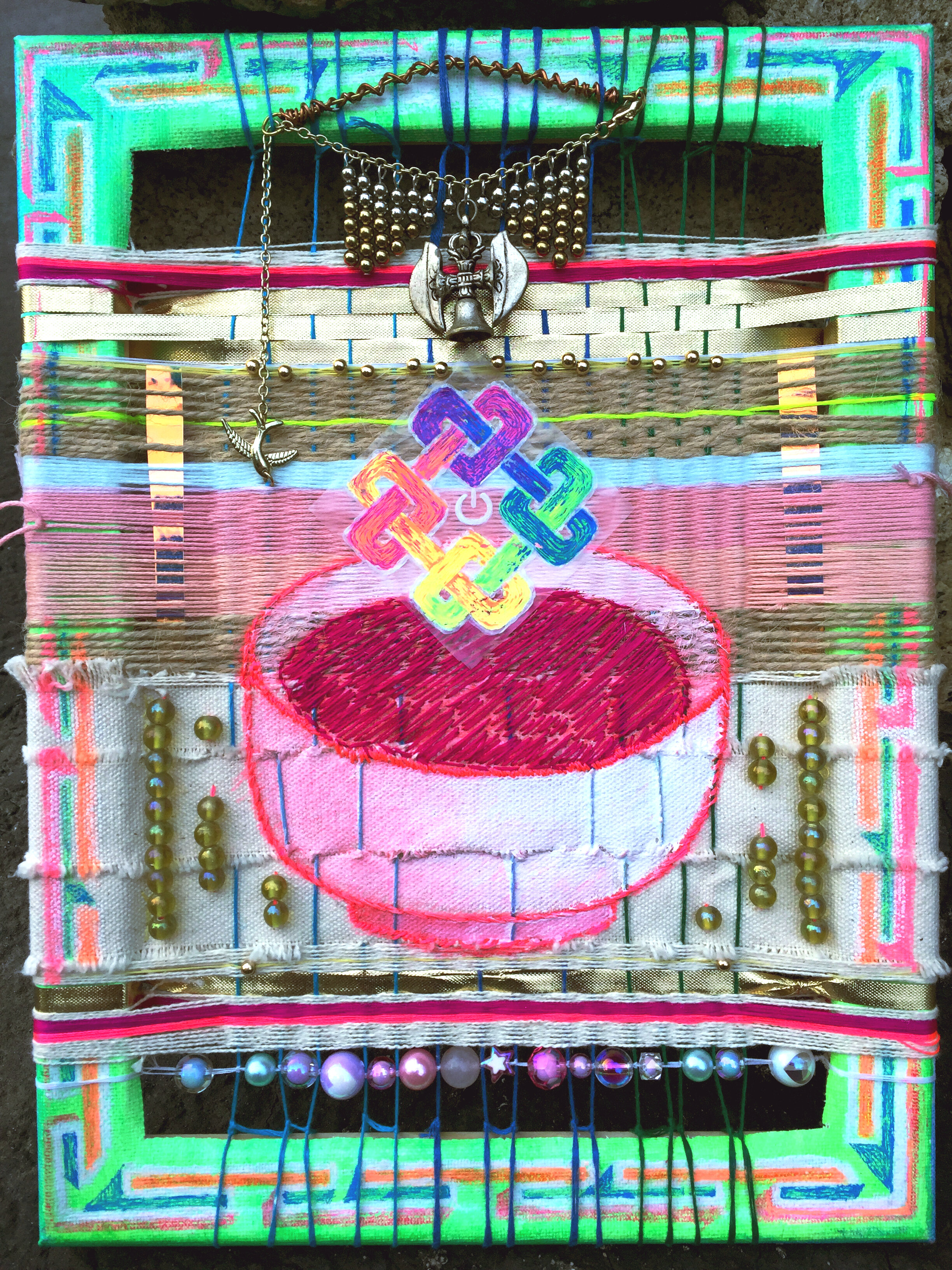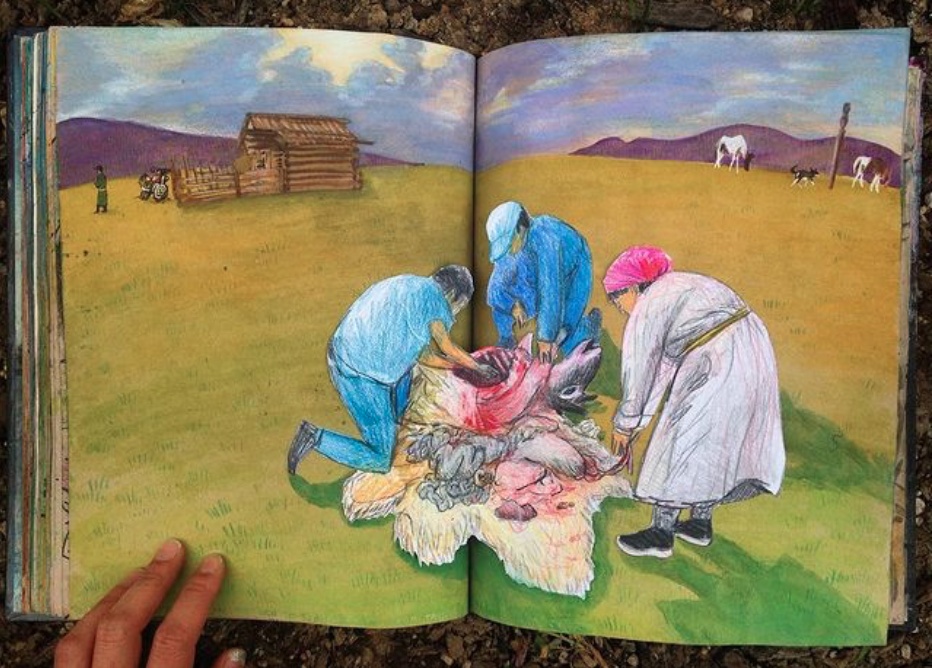“Love, to the Infinite Power” (2020)
(cross-posted to IG) // This month I was invited by @simone.j.johnson to participate in her ongoing research series: “Culinary Art House is an ever emerging, fluid mixed media project that provides space for Simone (and friends!) to explore personal, ecological, cultural, ancestral, spiritual and political perspectives around land, food, foodways, cooking and gardening.”
.
Along with Simone and three other artists- @bri.simpson @artschoolscammer @tattfoo
I will be showing a print of this sketchbook drawing “Mutton for Dinner” (from Mongolia 2016), and these two mixed-media textile pieces from 2020. Opening Reception this Thursday (1/21) 7-8pm (I won’t be there in-person but maybe virtually). If you’re nearby and the coast is clear, check out Simone’s collages and what the other artists have been working on lately 🍵💖
.
This iteration of Culinary Art House takes place as an on-site exhibition (Jan 19-30th) at 16 Orchard St, NYC @chinatownsoup
/ For more info and hours of operation, message @simone.j.johnson
"Meditations on Alchemy" by Simone Johnson // Materials: wood block, paper, foam, Black sharpie, magazine cut outs
“Mutton for Dinner” (2016) // pop-up sketchbook drawing
“This is a drawing of a Lhaghav’s family (and me) cleaning a freshly-killed sheep, preparing parts for dinner. I sketched the scene quickly first, blocking out shapes and colors, then put the crayons down and helped process guts, then finished the drawing weeks later. It is not about seeds or plants as food per se, but it was an important culinary moment for me when I went to Mongolia for the first time in 2016- I was in search of traditional shamans, and also for my own unearthed roots and ancestry.
On this trip, I learned that dairy and meat products from herd animals are the main staples of most peoples' diets there, because Mongolia is a Northern country of pastoralists, with long cold winters and short growing seasons, not a good climate for agriculture. People guide their herds to green pastures, where the animals graze grass, absorb plants' energy into their own, and then in turn the people eat the animals for sustenance. Herders maintain symbiotic relationships with their herds; Children grow up with calves, foals, and kids, and learn how to care for them from a young age.
Another reason why Northern herders do not have a suitable lifestyle for agriculture; Moving 2-6 times per year with the herds means not staying in one place long enough to harvest. Some grains and vegetables are eaten there too, flour for bread is popular, but they’re usually bought/ traded, not grown by most. Even Buddhist monks in Mongolia are ‘allowed’ to eat meat- 1) because it is the traditional culture, but also 2) because it’s a sensible and widely-available form of nutrition in that region.
My father told me that the Mongolian digestive system evolved to adapt to a meat-heavy diet. Google suggests ‘a unique gut microbiome composition.’
It reminds me of how my grandmother (non-Mongolian) used to yell at my grandfather (part-Mongolian) about how bad it was that he only ate meat and rice, ignoring the vegetables… Looking back now, I wonder, Was Grandma mistaken though? Maybe, with Grandpa’s genetics, was it actually just fine for him?? (He was almost 6 feet tall, and lived to be 88)
I support vegetarianism! Vegetables are magical and delicious. But I also keep this in mind whenever anyone suggests that ‘everyone should be vegetarian, people should stop eating meat’… How could this apply to a mainly carnivorous region, who considers the practice an ancestral tradition, and has been doing so for millennia? Are herders expected to abandon their herds?”
-Frog
1/ 11/ 2021



